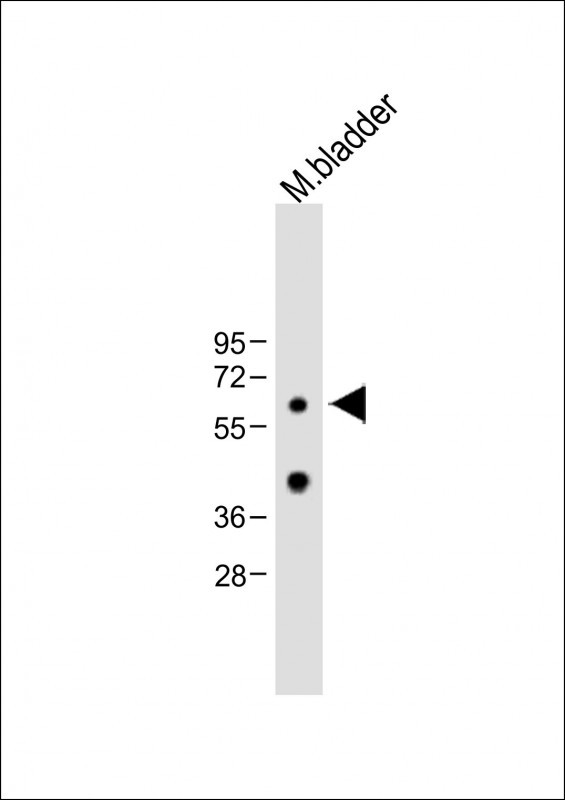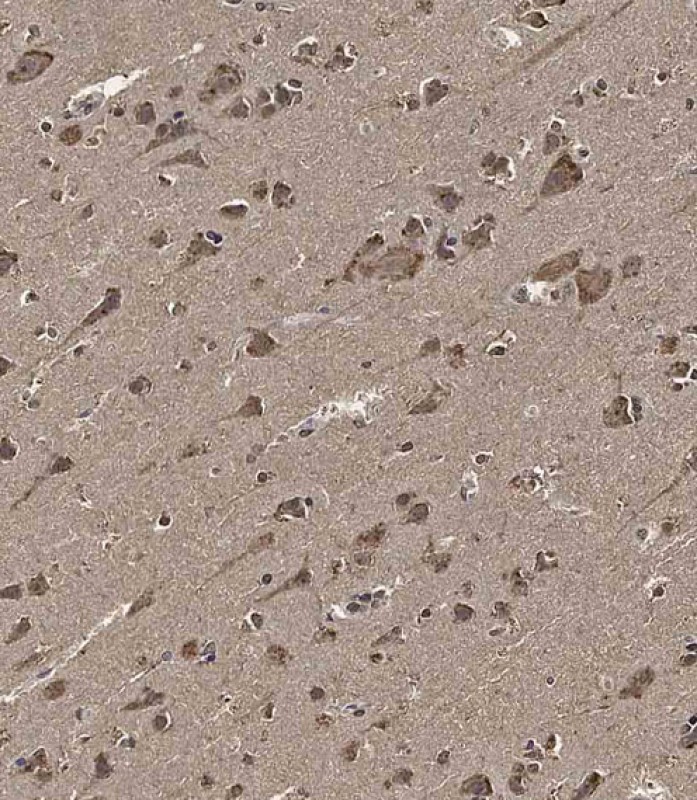MET10 Antibody (C-term)
Affinity Purified Rabbit Polyclonal Antibody (Pab)
- SPECIFICATION
- CITATIONS
- PROTOCOLS
- BACKGROUND

Application
| IHC-P, WB, E |
|---|---|
| Primary Accession | Q86W50 |
| Other Accession | NP_076991.3 |
| Reactivity | Human, Mouse |
| Host | Rabbit |
| Clonality | Polyclonal |
| Isotype | Rabbit IgG |
| Calculated MW | 63621 Da |
| Antigen Region | 444-472 aa |
| Gene ID | 79066 |
|---|---|
| Other Names | Methyltransferase-like protein 16, 211-, Methyltransferase 10 domain-containing protein, METTL16, METT10D |
| Target/Specificity | This MET10 antibody is generated from rabbits immunized with a KLH conjugated synthetic peptide between 444-472 amino acids from the C-terminal region of human MET10. |
| Dilution | IHC-P~~1:100 WB~~1:2000 E~~Use at an assay dependent concentration. |
| Format | Purified polyclonal antibody supplied in PBS with 0.09% (W/V) sodium azide. This antibody is purified through a protein A column, followed by peptide affinity purification. |
| Storage | Maintain refrigerated at 2-8°C for up to 2 weeks. For long term storage store at -20°C in small aliquots to prevent freeze-thaw cycles. |
| Precautions | MET10 Antibody (C-term) is for research use only and not for use in diagnostic or therapeutic procedures. |
| Name | METTL16 {ECO:0000303|PubMed:27872311, ECO:0000312|HGNC:HGNC:28484} |
|---|---|
| Function | RNA N6-methyltransferase that methylates adenosine residues at the N(6) position of a subset of RNAs and is involved in S-adenosyl- L-methionine homeostasis by regulating expression of MAT2A transcripts (PubMed:28525753, PubMed:30197297, PubMed:30197299, PubMed:33428944, PubMed:33930289). Able to N6-methylate a subset of mRNAs and U6 small nuclear RNAs (U6 snRNAs) (PubMed:28525753). In contrast to the METTL3- METTL14 heterodimer, only able to methylate a limited number of RNAs: requires both a 5'UACAGAGAA-3' nonamer sequence and a specific RNA structure (PubMed:28525753, PubMed:30197297, PubMed:30197299). Plays a key role in S-adenosyl-L-methionine homeostasis by mediating N6- methylation of MAT2A mRNAs, altering splicing of MAT2A transcripts: in presence of S-adenosyl-L-methionine, binds the 3'-UTR region of MAT2A mRNA and specifically N6-methylates the first hairpin of MAT2A mRNA, preventing recognition of their 3'-splice site by U2AF1/U2AF35, thereby inhibiting splicing and protein production of S-adenosylmethionine synthase (PubMed:28525753, PubMed:33930289). In S-adenosyl-L- methionine-limiting conditions, binds the 3'-UTR region of MAT2A mRNA but stalls due to the lack of a methyl donor, preventing N6-methylation and promoting expression of MAT2A (PubMed:28525753). In addition to mRNAs, also able to mediate N6-methylation of U6 small nuclear RNA (U6 snRNA): specifically N6-methylates adenine in position 43 of U6 snRNAs (PubMed:28525753, PubMed:29051200, PubMed:32266935). Also able to bind various lncRNAs, such as 7SK snRNA (7SK RNA) or 7SL RNA (PubMed:29051200). Specifically binds the 3'-end of the MALAT1 long non-coding RNA (PubMed:27872311). |
| Cellular Location | Nucleus. Cytoplasm |

Thousands of laboratories across the world have published research that depended on the performance of antibodies from Abcepta to advance their research. Check out links to articles that cite our products in major peer-reviewed journals, organized by research category.
info@abcepta.com, and receive a free "I Love Antibodies" mug.
Provided below are standard protocols that you may find useful for product applications.
If you have used an Abcepta product and would like to share how it has performed, please click on the "Submit Review" button and provide the requested information. Our staff will examine and post your review and contact you if needed.
If you have any additional inquiries please email technical services at tech@abcepta.com.













 Foundational characteristics of cancer include proliferation, angiogenesis, migration, evasion of apoptosis, and cellular immortality. Find key markers for these cellular processes and antibodies to detect them.
Foundational characteristics of cancer include proliferation, angiogenesis, migration, evasion of apoptosis, and cellular immortality. Find key markers for these cellular processes and antibodies to detect them. The SUMOplot™ Analysis Program predicts and scores sumoylation sites in your protein. SUMOylation is a post-translational modification involved in various cellular processes, such as nuclear-cytosolic transport, transcriptional regulation, apoptosis, protein stability, response to stress, and progression through the cell cycle.
The SUMOplot™ Analysis Program predicts and scores sumoylation sites in your protein. SUMOylation is a post-translational modification involved in various cellular processes, such as nuclear-cytosolic transport, transcriptional regulation, apoptosis, protein stability, response to stress, and progression through the cell cycle. The Autophagy Receptor Motif Plotter predicts and scores autophagy receptor binding sites in your protein. Identifying proteins connected to this pathway is critical to understanding the role of autophagy in physiological as well as pathological processes such as development, differentiation, neurodegenerative diseases, stress, infection, and cancer.
The Autophagy Receptor Motif Plotter predicts and scores autophagy receptor binding sites in your protein. Identifying proteins connected to this pathway is critical to understanding the role of autophagy in physiological as well as pathological processes such as development, differentiation, neurodegenerative diseases, stress, infection, and cancer.




